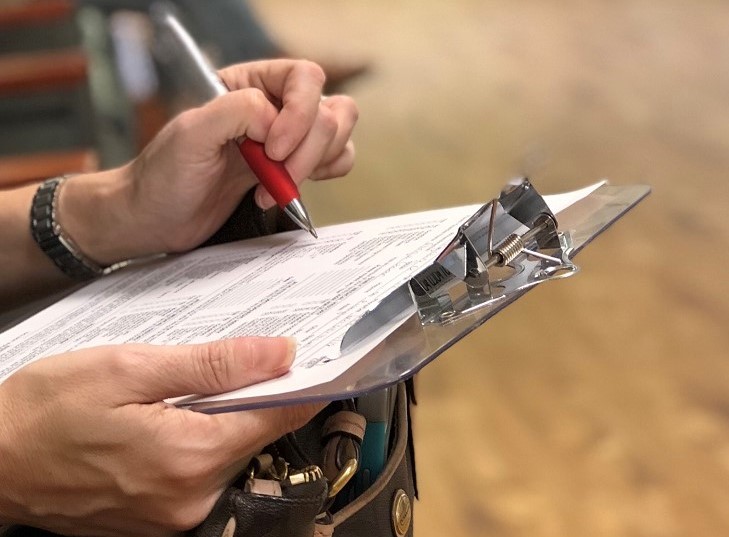If your workforce consists of more than ten employees, you are highly likely to require maintained injury or illness recordkeeping in order to be OSHA compliant.
OSHA recordkeeping criteria are that any work-related injury or illness beyond the need of first aid must be recorded on the following forms:
- OSHA form 300 (Log of Work-Related Injuries and Illnesses),
- OSHA form 300A (Summary of Work-Related Injuries and Illnesses), and
- OSHA form 301 (Injury and Illness Incident Report).
You can electronically submit information needed to complete the OSHA forms, and a hard copy must be maintained in the workplace for at least five years following the incident. These records should be at a location easily accessible by employees from February to April every year.
The information recorded on the forms can be beneficial for employers, workers and OSHA to better understand the hazards in the workplace and come up with strategies to eliminate them.
Recordkeeping of work-related injuries and illnesses can maximise occupational safety, so long as they’re done accurately and the OSHA recordkeeping requirements are met. Here’s everything you need to know.

What Does OSHA Constitute a Recordable Injury or Illness?
Occupational injuries and illnesses that must be recorded are those severe enough to warrant medical treatment beyond first aid.
Workplace injuries that must be recorded on an OSHA form include:
- work-related fatalities,
- loss of consciousness,
- any illness or injury that results in restricted work,
- any illness or injury that results in days away from work or even transferral to a different job.
Some incidents result in injuries or illnesses at a later stage. Therefore, the initially recorded incident must be updated to include these.
These injuries and illnesses include:
- any diseases arising from the exchange of bodily fluids due to needlesticks and sharps injuries,
- hearing loss, and
- tuberculosis.
How To Fill Out an OSHA Form for an Illness Incident Report
- Within seven calendar days or less, determine whether the incident meets the OSHA recordkeeping requirements.
- Establish if the incident is a new case or if it’s a recurrence of an existing case.
- Gather the three OSHA forms: form 300, form 300A and form 301.
- Identify the employee(s) concerned and determine whether there are any privacy concerns or if their name can be stated on the form.
- Describe the case as specifically as possible on the form, including the exact location and circumstances of the occurrence.
- Classify the seriousness of the case, for example, the most serious possibility is death.
- Fill in the number of days the worker was away from work, had restricted work activity or was on a job transfer.
How to Record Days off Work
For OSHA recordkeeping, begin counting the days away from work following the day that injury occurred or the illness started showing signs. However, do not include the day itself.
If a physician or licensed healthcare worker prescribes the worker to stay at home for a certain number of days, but they choose to come back to work prematurely, then you still need to record the day count as prescribed by the physician.
Similarly, if the worker needs to extend their time off, you should only record the day count as prescribed and the excess time off will fall under vacation days.
The recordkeeper must count the number of calendar days booked off regardless of weekend days, public holidays or any days the worker wasn’t scheduled to work. Every day booked off work as prescribed by a physician following the day of the incident must be included and recorded as days off work.
The total number of days away from work need not be recorded after 180 days. If the employee leaves the company while booked off, you may cease counting if the reason for leaving is unrelated to the incident. If it is related to the incident, the total number of days away should be estimated and recorded.

How to Record Restricted Work
An employee suffering from a work-related injury or illness can restrict their work by:
- not performing at least one routine function of his or her job, or
- not working the full workday that he or she should have worked as per the roster.
How Insure Compliance Can Help Maintain Occupational Safety
Insure Compliance offers a Safety Gap Model assessment to help companies evaluate the accuracy and efficiency of their OSHA recordkeeping concerning injuries and illnesses at the workplace.
This model identifies any gaps that don’t meet OSHA’s recordkeeping requirements:
- Awareness gap: understanding the jargon associated with the OSHA forms.
- Process gap: understanding how to populate the OSHA forms correctly.
- Knowledge gap: training employees required to perform recordkeeping.
- Verification gap: inspecting forms and records to ensure correctness.
- Accountability gap: hold employees accountable when recordkeeping is done incorrectly.
Incorrect recordkeeping of injuries and illnesses can result in an OSHA violation. So, making sure it’s being done properly can save your company hundreds of dollars in penalty fees.
Key Takeaways
Companies can increase their occupational safety and health by performing the correct OSHA standards of recordkeeping of workplace injuries. Routinely reviewing the logs and implementing measures to reduce the likelihood of the instances recurring results in a positive safety culture.
It’s crucial to understand what constitutes a recordable illness or injury, such as medical treatment beyond first aid.
Then, the appointed employee must be able to record the incident on the OSHA forms correctly.
Days off work, restricted work and job transfer must all be recorded from the day following the incident – regardless of whether the worker complies with the prescribed amount of days or not.
Contact us today if you need training for recordkeeping of occupational injuries and illnesses to improve your workplace safety culture and save you money on OSHA violation penalty fees.
Disclaimer:
Please note that every effort has been made to ensure that the information provided in this guide is accurate. You should note, however, that the information is intended as a guide only, providing an overview of general information available to businesses. This guide is not intended to be an exhaustive source of information and should not be seen to constitute legal, safety or business advice. You should, where necessary, seek your own advice for any issues raised in your affairs.







